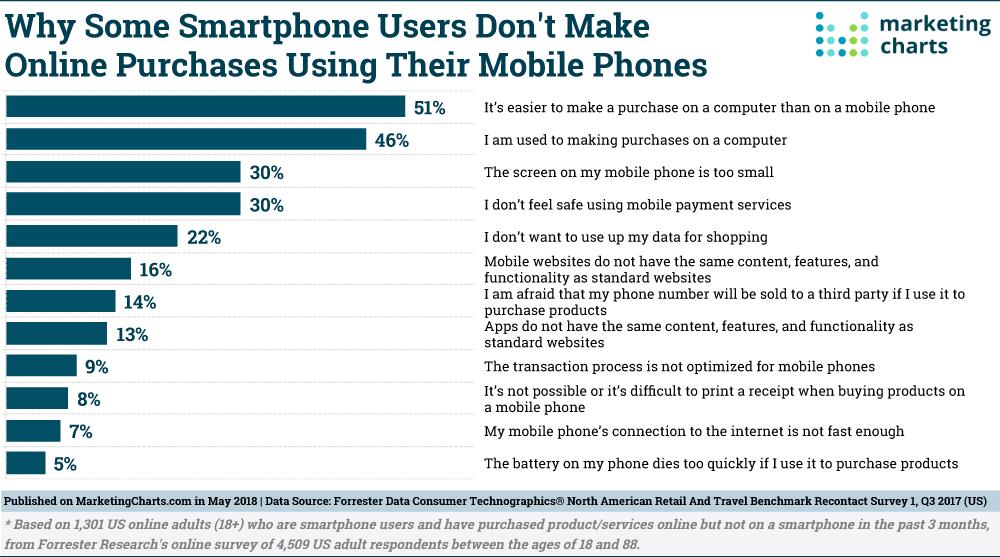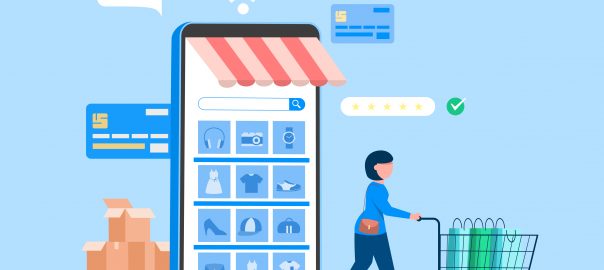Introduction
In today’s digital landscape, mobile devices have become an integral part of our lives. From social media interactions to online shopping, smartphones have revolutionized the way we connect and engage with the world around us. As a custom development software company, it is crucial to understand the immense potential of mobile commerce, or mCommerce. In this blog, we will delve into the key elements of mCommerce: responsive design, mobile optimization, and in-app purchases. We will explore their significance for businesses, their impact on user experience, and how you can leverage them to drive growth and success in the competitive digital market.
Key Elements of mCommerce:
1. The Significance of Responsive Design
In the era of mobile dominance, having a responsive design for your website is no longer a luxury but a necessity. Responsive design ensures that your website adapts seamlessly to various screen sizes and resolutions, providing a consistent and optimized user experience across all devices, including smartphones, tablets, and desktop computers.
One of the primary advantages of responsive design is improved accessibility. With a single website that adjusts dynamically to different devices, you eliminate the need for separate mobile websites or applications. This streamlines your development efforts and ensures that users can access your content conveniently, regardless of the device they are using.
Moreover, responsive design plays a vital role in enhancing user engagement and driving conversion rates. A responsive website loads quickly, has intuitive navigation, and presents content in a visually appealing manner. By providing a seamless and user-friendly experience, you create a positive impression and encourage users to explore your offerings, leading to increased conversions and customer satisfaction.
2. Maximizing Mobile Optimization
While responsive design sets the foundation for a mobile-friendly website, mobile optimization takes it a step further by fine-tuning your site’s performance specifically for mobile devices. With the majority of online traffic coming from mobile users, optimizing your website for mobile devices is crucial for capturing and retaining their attention.
To begin with, focus on creating mobile-friendly content. Ensure that your text is legible, images are properly sized, and buttons are easily tapable on smaller screens. Optimizing images by compressing them, leveraging caching mechanisms, and minimizing HTTP requests are some effective techniques to improve page loading speed on mobile devices.
Another key aspect of mobile optimization is the implementation of Accelerated Mobile Pages (AMP). AMP is an open-source technology that streamlines the loading process by removing unnecessary elements and prioritizing core content. By embracing AMP, you can significantly reduce page load times, providing users with a lightning-fast browsing experience and reducing bounce rates.
Furthermore, optimizing the user interface (UI) and user experience (UX) design is crucial for mobile success. Simplify navigation menus, reduce form fields, and incorporate intuitive gestures to enhance usability. Features like auto-fill, voice search, and mobile payments can streamline the purchasing process, making it effortless and enjoyable for mobile users.
3. Capitalizing on In-App Purchases
In-app purchases have revolutionized the way businesses monetize their mobile applications. Whether you offer products, services, or premium content, integrating a seamless and secure in-app purchase system can drive revenue growth and enhance user engagement.
By providing a convenient and frictionless in-app purchase experience, you enable users to make purchases without leaving the app. This not only simplifies the buying process but also reduces the likelihood of distractions or abandonment, leading to increased conversions and higher customer satisfaction.
To leverage the power of in-app purchases effectively, it’s crucial to understand your target audience and align your offerings with their needs. Consider implementing different pricing tiers, and subscription models, or offering limited-time promotions to incentivize users to make purchases. Personalization is the key; employing smart analytics and user behavior tracking allows you to personalize offers and recommendations based on individual preferences, enhancing customer engagement and driving repeat purchases.
Additionally, building a robust and secure payment infrastructure is essential to instill trust and confidence in your users. Utilize industry-standard encryption protocols, integrate trusted payment gateways, and implement robust security measures to protect user data and financial transactions.
4. Ensuring Security in Mobile Commerce
When it comes to mobile commerce, security is paramount. As a custom software development company, you have a responsibility to safeguard the privacy and sensitive information of your users. Here are some key considerations for ensuring security in mCommerce:

- Secure Payment Processing: Implement stringent security measures to protect payment transactions. Utilize encryption technologies, such as SSL (Secure Sockets Layer) or TLS (Transport Layer Security), to encrypt data transmitted between the user’s device and your servers. Additionally, partner with reputable payment gateways that adhere to industry security standards.
- User Authentication: Incorporate robust authentication mechanisms, such as two-factor authentication, to verify user identity and prevent unauthorized access. This can include a combination of passwords, biometrics (such as fingerprint or facial recognition), or one-time verification codes.
- Data Protection: Safeguard user data by implementing strict data protection measures. This includes employing encryption for sensitive information stored on servers and using secure protocols for data transmission. Regularly update security patches and perform vulnerability assessments to identify and address any potential weaknesses.
- Compliance with Regulations: Stay informed and compliant with relevant data protection regulations, such as the General Data Protection Regulation (GDPR) or the California Consumer Privacy Act (CCPA). Ensure that you have the necessary consent mechanisms in place, provide transparency regarding data collection and usage, and offer users control over their personal information.
- Regular Security Audits: Conduct regular security audits and penetration testing to identify vulnerabilities and address them promptly. Collaborate with cybersecurity experts to assess your systems and implement best practices for securing user data.
Conclusion
Mobile commerce, with its immense potential, has transformed the way businesses interact with customers. By embracing responsive design, optimizing for mobile devices, and capitalizing on in-app purchases, custom development software companies can unlock the full power of mCommerce. A seamless and engaging mobile experience leads to higher customer satisfaction, increased conversions, and sustained growth.
Remember, responsive design ensures that your website looks and functions optimally across all devices, improving accessibility and user engagement. Mobile optimization enhances performance, speed, and user experience, allowing you to capture and retain mobile users effectively. In-app purchases provide a convenient and secure way to monetize your applications, maximizing revenue opportunities and fostering long-term customer loyalty.
As technology continues to advance and mobile devices play an increasingly significant role in our lives, embracing mCommerce is not just an option but a necessity for businesses to thrive in the digital marketplace. So, invest in responsive design, optimize for mobile, and leverage in-app purchases to propel your software development company to new heights of success in the mobile-first world.
